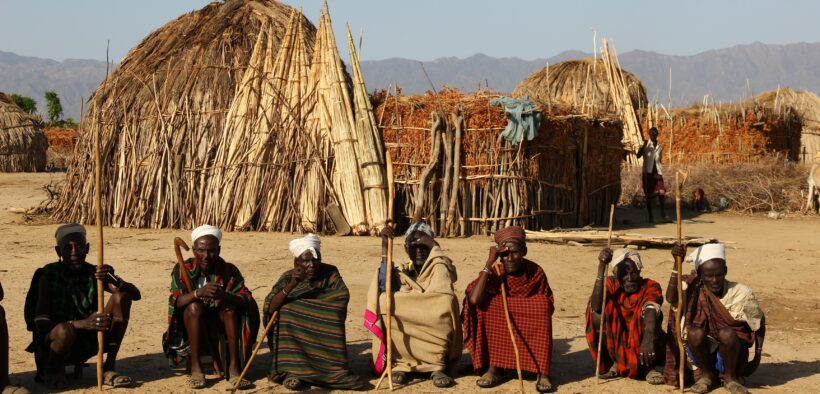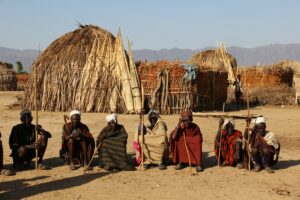New Covenant Missions Equips Native Church Leaders in ‘Tension Belt’ Area of Africa
Starting in Ethiopia, the mission group now supports church planters in 28 countries.

After visiting an Ethiopian pastor he had met in the United States, Mike Stemm founded New Covenant Missions (NCM) in 2001 to help churches in the country be less dependent on foreign resources.

According to current CEO and president Erik Laursen, the ministry has expanded in scope and region. It helps equip indigenous people to evangelize and plant churches in 28 countries across Africa.
Why does it focus on indigenous church leaders? Laursen gave two reasons.
First, “Our indigenous leaders already know the culture and know the language and it doesn’t cost very much to empower them to do the work,” he said.
Second, it is sustainable. “The field workers have the vision to reach the people with or without us. We are just pouring gasoline on their fire, so to speak.”
Much of NCM’s activity is focused on the “tension belt”—an area of Africa “where terrorism, poverty, witchcraft, and corruption are destroying lives every day.”
Last year, NCM’s 514 field workers shared the Gospel with 339,759 people, saw 26,267 conversions, and conducted 4,713 baptisms. Additionally, 423 “official churches” were planted and 1,932 house churches began.
Official churches are defined by NCM as congregations that have a structured leadership and are recognized as meeting regularly for worship. House churches are less formal and may be described as “elevated discipleship,” Laursen says. NCM supports church planters, but once the church is planted, it is self-supported.
He told MinistryWatch that NCM field workers provide monthly updates from which its reported numbers are drawn. Laursen said those reports are spot checked for accuracy.
There is no incentive for field workers to inflate their numbers, Laursen said. “They don’t get bonuses or anything like that. They get a basic monthly stipend that averages about $200 a month,” he added.
Access to MinistryWatch content is free. However, we hope you will support our work with your prayers and financial gifts. To make a donation, click here.
Laursen acknowledged that NCM sees some attrition of people who profess faith in Christ, especially in the Islamic stronghold areas of Africa because converts tend to face stronger persecution and family pressure there.
NCM focused its work primarily on Ethiopia in its early years, but in 2013 began expanding beyond. In 2018 at the Finishing the Task conference, NCM agreed to “adopt” 45 unengaged unreached people groups in Africa and has since engaged with each of those groups.
When it prepares to move into a new region, its field worker team of at least two people agrees to go live in the unreached area for about three years. Using tools like the Jesus Film and gospel literature from World Missionary Press, the field worker team reaches out to the community. Sometimes in more hostile areas, like Islamic strongholds, a “bridge project,” like a water source, school, or literacy project, is provided to open doors in the community.
When choosing field workers to do evangelism and church planting, NCM tries to find those who already have biblical or seminary training. But if not, NCM provides some training through partners like Biglife and Dynamic Church Planting International.
Laursen pointed to at least two people groups who are no longer “unreached.” In Uganda, NCM sent a field worker team to a people group of about 12,000. They started their work in 2018 and had a breakthrough with a chief. Now 10% of the people are following Jesus and are sending field workers to neighboring tribes. In Congo, a people group of about 6,000 people is no longer considered unreached because about 20% of its population are believers.
While NCM has been focused on unengaged and unreached people groups, it is shifting its strategy to include a village by village approach. Laursen said that it, along with about 25 other ministries, contribute geographic data about villages on the continent and whether they’ve been reached.
As an example of the importance of this strategy change, he pointed to a village in Ethiopia that had not been reached with the Gospel even though it was considered part of a “reached” people group. Now there are about 1,500 believers in that village, he said.
NCM has grown financially over the last few years, nearly tripling its revenue. Since its inception, it has implemented a “church planter” sponsorship program where Americans can support a church planter each month and receive a monthly report from the pastor along with prayer requests. About 30% of its church planters are supported through sponsorships.
Laursen said he plans to continue growing partnerships with other like-minded ministries to fundraise together and eliminate duplication. Right now he said it only accounts for about 5% of the ministry revenue, but he sees that growing immensely.
In the MinistryWatch database, NCM has a five-star efficiency rating, but a D transparency grade because it does not belong to the Evangelical Council for Financial Accountability (ECFA) and does not publish audited financial statements on its website.
Main photo: Photo by Fabrizio Frigeni / Unsplash / Creative Commons



